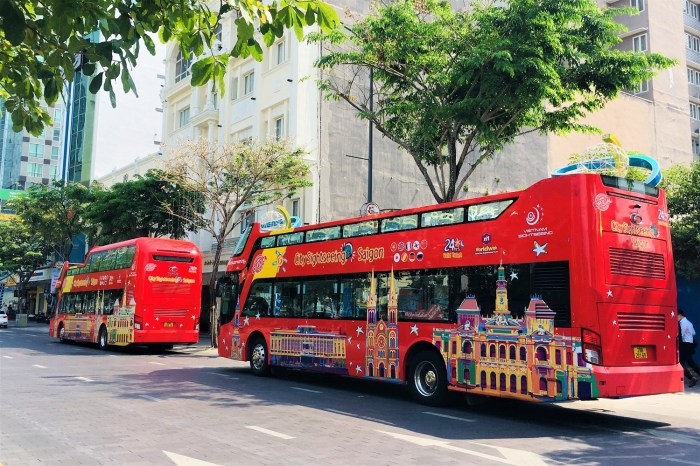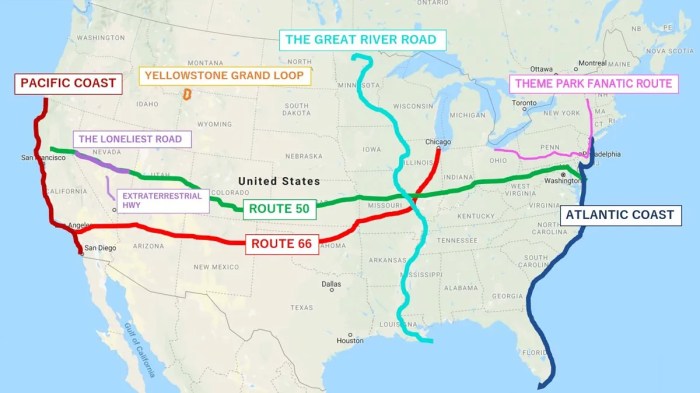Journeys across the United States in the mid-1800s were transformative events that shaped the nation’s history and identity. From the arduous overland trails to the groundbreaking Transcontinental Railroad, these journeys showcased the resilience, determination, and ingenuity of the American people.
This comprehensive exploration delves into the motivations, challenges, and impacts of these remarkable journeys, providing a deeper understanding of the westward expansion and the development of the United States.
The Overland Trails
The mid-1800s witnessed a surge in westward expansion in the United States, driven by the desire for land, adventure, and economic opportunities. This period saw the emergence of several major overland trails that played a pivotal role in shaping the settlement of the American West.
Among the most prominent overland trails was the Oregon Trail, which stretched from Independence, Missouri, to Oregon City, Oregon. It was used by thousands of pioneers seeking to establish new lives in the fertile lands of the Pacific Northwest. The Mormon Trail, another significant route, extended from Illinois to the Salt Lake Valley in Utah and was primarily used by members of the Church of Jesus Christ of Latter-day Saints.
The Santa Fe Trail, connecting Missouri to Santa Fe, New Mexico, served as a vital trade route between the United States and Mexico.
Pioneers who embarked on these arduous journeys faced numerous challenges. They endured harsh weather conditions, rugged terrain, and the constant threat of attacks from Native American tribes. However, they were driven by a relentless determination to reach their destinations and build new lives in the West.
The overland trails had a profound impact on the settlement of the American West. They opened up vast territories to homesteaders, miners, and traders, leading to the establishment of new communities and the development of new industries. The trails also played a crucial role in shaping the cultural and political landscape of the United States.
The Pony Express

The Pony Express was a mail delivery service that operated from 1860 to 1861. It was established to provide fast and reliable communication between the eastern and western United States, prior to the completion of the Transcontinental Telegraph.
The Pony Express used horses to transport mail across the Great Plains and Rocky Mountains. Riders traveled in relays, changing horses every 10 to 15 miles. The service was incredibly fast, with mail traveling from Missouri to California in just 10 days.
Pony Express riders faced numerous challenges and risks. They endured harsh weather conditions, rugged terrain, and the constant threat of attacks from Native American tribes. They also had to navigate treacherous mountain passes and cross swollen rivers.
Despite the challenges, the Pony Express was a vital communication link between the East and West. It played a crucial role in the development of the United States, facilitating the flow of information and goods between the two regions.
The Transcontinental Railroad

The Transcontinental Railroad was a monumental achievement in American history. It connected the eastern and western United States by rail, creating a single transportation network that spanned the entire continent.
The construction of the Transcontinental Railroad began in 1863 and was completed in 1869. It was a massive undertaking, involving the labor of thousands of workers, including Chinese immigrants who played a significant role in its construction.
The Transcontinental Railroad had a profound impact on the American economy and society. It reduced travel time between the East and West from months to days, facilitated the transportation of goods and people, and stimulated economic growth in the western United States.
The California Gold Rush: Journeys Across The United States In The Mid-1800s

The California Gold Rush was a period of rapid migration to California that began in 1848. It was sparked by the discovery of gold at Sutter’s Mill in January of that year.
Thousands of people from all walks of life flocked to California in search of gold. They came from the United States, Europe, and even China. The Gold Rush had a profound impact on California, leading to the establishment of new towns, the development of new industries, and a rapid increase in population.
Gold miners faced numerous challenges. They had to endure harsh weather conditions, rugged terrain, and the constant threat of attacks from Native American tribes. They also had to contend with the difficulties of finding and extracting gold.
The Homestead Act
The Homestead Act was a landmark piece of legislation passed by the United States Congress in 1862. It granted land to settlers who were willing to live on and improve it.
The Homestead Act was designed to encourage westward expansion and the settlement of the American West. It offered homesteaders the opportunity to acquire up to 160 acres of land for free.
Homesteaders faced numerous challenges. They had to endure harsh weather conditions, rugged terrain, and the constant threat of attacks from Native American tribes. They also had to clear the land, build a home, and establish a farm or ranch.
Clarifying Questions
What were the major motivations for westward expansion in the mid-1800s?
The major motivations for westward expansion included the desire for new land and economic opportunities, the search for religious freedom, and the allure of adventure.
What were the challenges faced by pioneers on the overland trails?
Pioneers on the overland trails faced numerous challenges, including harsh weather conditions, lack of supplies, disease, and attacks from Native American tribes.
What was the significance of the Pony Express?
The Pony Express was a vital mail delivery service that significantly reduced the time it took to communicate between the eastern and western United States.
How did the Transcontinental Railroad impact the United States?
The Transcontinental Railroad connected the eastern and western United States by rail, revolutionizing transportation and trade, and contributing to the economic growth of the nation.
What were the provisions of the Homestead Act?
The Homestead Act granted land to settlers in the American West who agreed to live on and cultivate the land for five years.